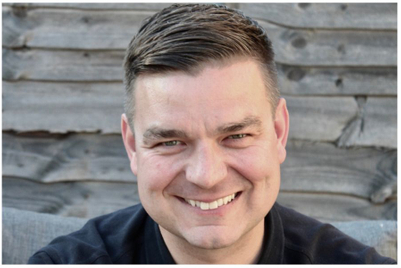
| You can find the results of Kantar and Campaign Asia-Pacific's 2018 gender survey here; and read our breakdown of the headline findings here. |
The discussion around gender parity has moved on a great deal since we launched our first study into the state of play in Asia Pacific last year. Back in 2017, we learnt that there was no shortage of ambition amongst women working in the media and marketing industry. However, for all the rhetoric around equality, many women felt that bias still existed and was holding them back from reaching their full potential.
Since then we’ve witnessed a global shift in the gender debate. The #MeToo movement exposed the widespread prevalence of sexual harassment, especially within the workplace, whilst new transparency laws have revealed the true extent of gender pay gaps. The debate has become louder and more forceful—gender inequality is still a pervasive issue and needs to be addressed.
The question is what impact, if any, all this talk has had on the real experience of women in the media and marketing industry in Asia Pacific?
Our 2018 results show that awareness of unconscious bias is higher. Both men and women are more likely to see unequal treatment of women at work, with 49% of women and 16% of men saying that men receive more respect from top management than women, up from 39% and 9%, respectively, in 2017.
Yet higher awareness of unconscious bias has not translated into behavioural change.
A third of women questioned still attend meetings that are dominated by male colleagues. This is an indicator of a cultural challenge. In companies where men and women say they are treated equally, far fewer employees see male-dominated meetings, while in companies where unequal treatment exists, over half of women (59%) see behaviours such as women being interrupted or not being heard when they express an opinion. One female respondent said that her manager always chooses men to lead meetings when he’s away, whilst a male respondent commented: “When a woman could have done a better job at something, I was asked to ‘lead’ because I am male.”
The most commonly experienced form of harassment was degrading comments or sexual innuendo, with particularly high levels in countries with a more masculine office culture, such as in Australia and New Zealand
The experience has not improved year on year, despite the generally higher consciousness around gender bias. This tells us that we need to be more explicit when talking about the specific behaviors that impact gender equality, rather than expressing ‘general outrage’. When men and women agree on what bias looks like when it’s in front of them, it becomes conscious and can be changed.
One of the most notable findings this year was the reminder that gender constructs don’t just hinder women. Half of those surveyed, both men and women, said that they felt the pressure to conform to gender stereotypes.
This feeling of needing to conform was particularly strong in companies where men and women believe they are not treated equally (75%), highlighting that institutional sexism is self-perpetuating. Businesses that do not create an equal environment for employees are increasing the pressure to conform for both genders. And this pressure diminishes both men and women. Women feel pressure to be ‘nice’ or accommodating, while men feel pressure to be hyper-masculine and talk sports and go drinking. In many cases, these stereotypes are entrenched by seemly benign company policies such as dress codes or group activities that lean towards one gender or another. Yet it was clear that the respondents felt passionately about the divisive effect of stereotypes.
There are more sinister effects of gender stereotyping too. Half of women and a quarter of men have experienced sexual harassment in their media and marketing careers. The most commonly experienced form of harassment was degrading comments or sexual innuendo, with particularly high levels in countries with a more masculine office culture such as in Australia and New Zealand.
Organisational involvement is currently rare, with only 14% of those who have experienced or witnessed harassment telling their employer. Those surveyed said that the most important factor that would increase the likelihood of reporting is the knowledge that their career would not be damaged. One respondent said: “As a man, reporting an incident of sexual harassment will destroy my career and credibility”. If this is how a male employee feels, it is clear that female employees would also not feel safe reporting incidents.
Much more change is needed. The number of men and women who feel their organization could be doing much more to reach gender parity has increased, and most markedly among men. People also reported that only 37% of their organisations have an action plan for gender equality, up from 31% in 2017 but still uncomfortably low. In terms of the changes people believe will make a difference, men want to see more unconscious bias training and flexible working. Women want a broader range of changes — pay parity was top of the list, however the results call for a whole package of improvements, from flexible working to development opportunities.
The pressure is on for businesses to address the culture in which inequality can exist. There is no single silver bullet. Many small but significant changes are needed in policies, education, and leadership. During an investigation into bullying and harassment in the Australian military, Lieutenant General David Morrison stated: "The standard you walk past is the standard you accept". We all need to take responsibility — becoming conscious of what we implicitly encourage and role modeling the real change we need to see.
Anne Rayner is chief solutions officer, Insights Division at Kantar. The Campaign Kantar Gender Study investigated men and women's perceptions and experiences of gender in media and marketing workplaces across Asia Pacific in March and April 2018.



.jpg&h=334&w=500&q=100&v=20250320&c=1)


.jpg&h=334&w=500&q=100&v=20250320&c=1)
.jpg&h=334&w=500&q=100&v=20250320&c=1)

.png&h=334&w=500&q=100&v=20250320&c=1)








.jpg&h=268&w=401&q=100&v=20250320&c=1)
.jpg&h=268&w=401&q=100&v=20250320&c=1)